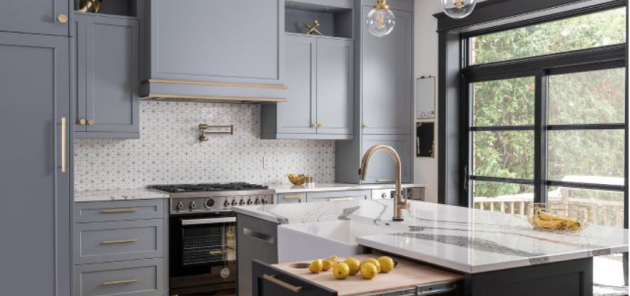
By Steve Maxwell
Troubles, stay away please!
Canadian Contractor Kitchen & Bath canada contractor renos tipsFour lessons for proactively avoiding kitchen and bath renovation pitfalls.
Kitchen and bathroom renovations offer some of the lowest hanging fruit when it comes to profits because people value these spaces more than most others in a house. This is a good thing in some ways, but as with most good things in life, there’s a corresponding downside. Homeowners will invest more in kitchens and bathrooms, yes, but they also expect more from you as a contractor, too. Sometimes quite a bit more. The trick to earning consistent profits from such work while minimizing pain and trouble comes down to one main thing. You need to deal with trouble before trouble deals with you.
What does this mean in practice? It’s mostly about anticipating the higher likelihood of issues and pickiness than with other projects, then taking proactive steps to minimize the chances that profit-sapping problems will ever happen.
Tip#1: Recognize gender differences
After 40 years of observation, I cannot think of a single example of a man and woman living in a house together where the woman was not the person in charge of planning, monitoring and quality control of a kitchen and bathroom renovation. No generalization is perfect, but this one is helpful because it’s so widespread. Men and women typically think quite differently and if you don’t accept that potentially controversial statement you’re likely to step into steaming piles of trouble unnecessarily. Women tend to be warier than men of being taken advantage of by a contractor, and they usually appreciate detailed explanations that demystify some part of the process or another. If you
don’t know how most women like to be treated during a five-figure kitchen or bathroom reno, you will soon find out.
Tip#2: Document detailed parameters
Kitchens and bathrooms have more technical things going on there than other spaces. That’s why documentation and communication is so important. Build a parameter sheet on a simple cloud platform such as Google Docs and work with your client to document everything that’s part of the project ahead of time, especially things like plumbing fixture choices, floor covering options, hardware details and appliance model numbers, among other things. Sharing on the cloud keeps everything current and allows adjustments to be made on the fly and on any phone. I use Google Docs all the time for this and other tasks.
Tip#3: Explain the process
Even the best renovations are disruptive and messy. Most of your clients have never lived through a major kitchen or bath reno and that’s why you need to explain something about the process to them. Keeping clients’ minds at ease is the first and most important part of any smooth job. This comes down to emotional preparation of your clients. Before anything physical happens at all, explain how things will be dirty, noisy, ugly and seemingly catastrophic. No need to worry, though. This is what good renovations look like. Also explain that a complex process like a kitchen or bathroom reno usually involves unexpected things. Everyone needs to have the mental flexibility to pivot as new realities emerge. It’s vital that you have this talk before unexpected realities set in. Mentioning this after trouble arises is worse than not saying anything at all. You don’t want your client to wonder why their idiot contractor didn’t mention the challenges before they happened.
Tip#4: Create a written pledge
Every major renovation is something like getting married. Both parties involved need to do the right thing for the relationship to work out. There must be a certain amount of selflessness and giving. A written pledge lays out the standards of conduct that both you and the homeowner commit to follow. On your part, this could mean you pledge in writing to be honest in all things and to give this project enough attention to keep progressing and succeeding over time. If an issue arises that will slow the project down, you promise to mention it right away.
On the client’s side, they need to understand that changes in design and approach must be requested as little as possible. Besides being
expensive financially, change orders are also expensive emotionally when tradespeople have to undo their work and redo it in a different (and often not any better) way. Change orders must only be used as little as possible. Your clients need to understand this ahead of time.
Not every contractor has what it takes to succeed with the demanding work of a high-end kitchen or bathroom job, but for those who prepare
themselves properly it can mean a high-end reputation and profitability. Isn’t that why you got into this work in the first place?


Leave a Reply